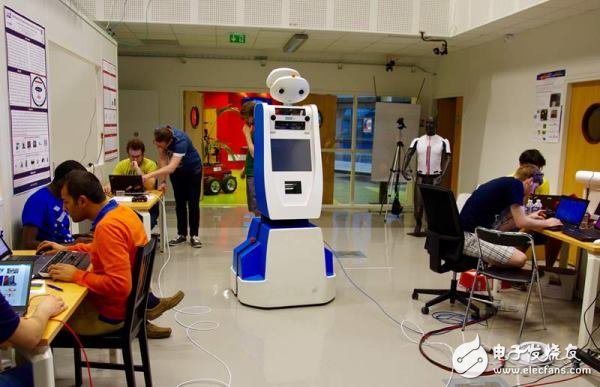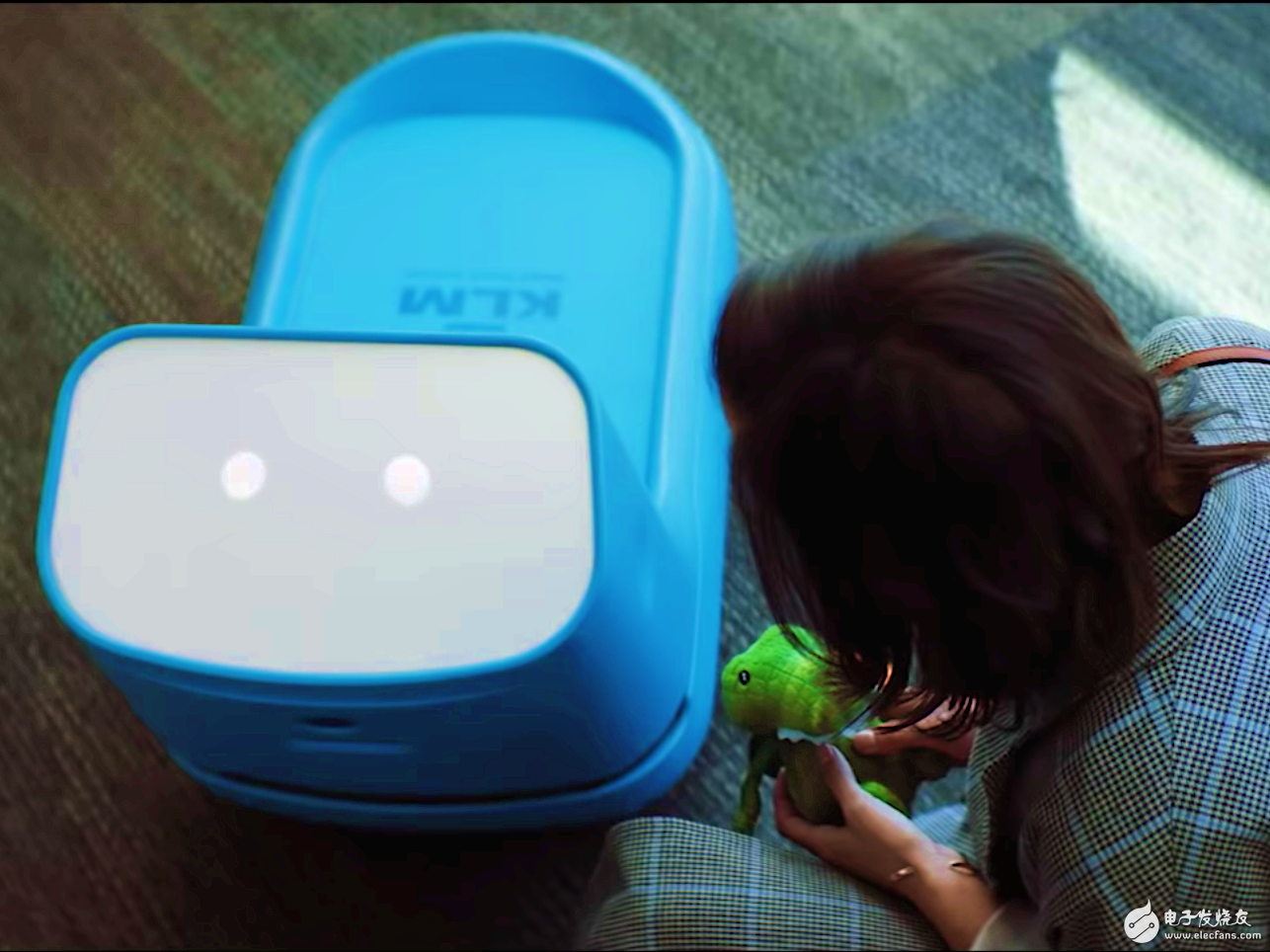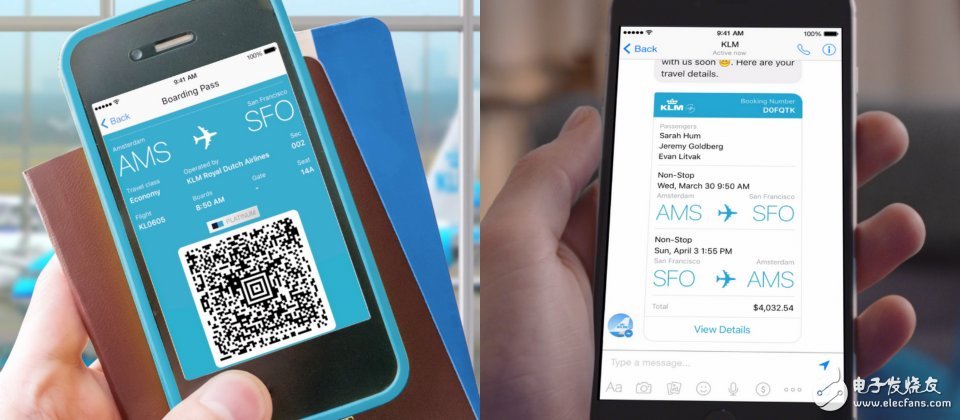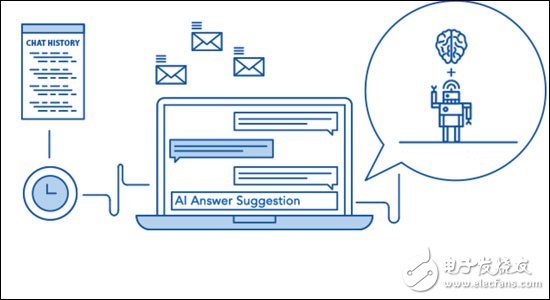â–²KLM uses intelligent robots to serve at the airport.
Recently, KLM Royal Dutch Airlines is testing a smart robot called "Care E" (Care E), which can help passengers carry hand luggage at the airport, guide the boarding gate, and make travel easier and more enjoyable like a personal assistant. . KLM had previously tried a way-guided robot named "Spencer" at Amsterdam Airport Schiphol. Nowadays, more and more well-known airlines are focusing on planning the layout of AI strategy development. According to industry analysts, the current application of AI in the aviation field coincides with a blue ocean. Although most of the current applications are in the first-generation stage of AI, in the near future, as technology evolves and matures, it will bring changes to the aviation industry. the power of.


â–²Care E, an intelligent robot tested by KLM Royal Dutch Airlines.
Solve air traffic congestion
During the flight, when passengers, especially the elderly, were using the restrooms and suddenly heard the announcement on the plane "I am experiencing turbulence, please go back to your seat." I am afraid that there is already a great danger. In the "Sky Center" exhibition hall of Thales Group in Paris, France, François Delier, the company’s air traffic management business strategy director, introduced to the reporter of "Science and Technology Daily": "The current air traffic control system can be based on The weather forecast service avoids turbulence in the air as much as possible. The general solution is to reduce the flight by 300 to 500 meters and bypass the bad weather section. However, each channel in the air has a certain amount of carrying traffic, and unexpectedly inserted aircraft without pre-planning. It will cause congestion or chaos."
In order to meet actual needs, countries have begun to build airports, improve efficiency, and increase the number of safe inbound and outbound flights.
Delier pointed out: "If the interval between landings can be shortened by one or two minutes, 20% to 40% of air traffic congestion will be improved. However, the take-off and landing process of airport aircraft is very complicated, with wind speed and smog. , Rainfall, strong wind, icing, runway environment, etc. are all influencing factors. This requires the artificial intelligence system to be embedded in the airport air traffic control system, and recognition and prediction through deep learning technology. Artificial intelligence can be used in air traffic control. It accurately calculates traffic to help solve air congestion and improve aviation safety."

â–²KLM mobile APP service.
Make flying safer
Some aviation experts pointed out that the big place for artificial intelligence in the aviation industry is the cockpit. AI autopilot can help pilots complete complex operations and respond to various emergencies. Although the research in this field has just started, it is progressing rapidly. "Each aircraft has thousands of sensors, and each sensor generates data every second. Most of the source formats are inconsistent. The current analysis strategy is unable to cope with the massive amount of data, which affects the pilot's correct judgment." Carnegie According to Jamie Carbonell, a computer scientist at Mellon University.
According to the US "Online" magazine, Boeing and Carnegie Mellon University jointly established an aviation data analysis laboratory to use artificial intelligence to create a unified information analysis method that can be extended to cloud data processing algorithms. In this way, a better tracking and understanding of flight safety, aircraft performance and longevity can be carried out to help airlines and their customers develop monitoring, maintenance and operation strategies.
It is understood that the current civil aircraft systems are becoming more and more complex, and it is no longer possible to simulate all failure conditions. The traditional pilot training system can only simulate dozens of typical failures. Applying AI to the next generation cockpit to simulate human behavior will help develop pilot training solutions to deal with various risks.
With the rapid development of automated flight technology, perhaps the era of humans operating various instruments will soon pass. A research team at the University of London is developing an AI-based "intelligent autopilot system" that can accurately predict various flight conditions while ensuring that pilots understand the progress of things. The researchers said that assuming that this type of system can one day be officially used on commercial aircraft, it will be a major milestone and may cross the era of human pilots and enter a new era.

â–² AI provides answers and suggestions.
Provide personalized travel services
"To enhance the aviation intelligence ecosystem through AI, on the one hand, it is necessary to enhance the passenger experience and the ease of use of the information system, on the other hand, to increase the company's own benefits and effectiveness." said Wu Zhidian, general manager of the information management department of HNA Tourism Group Co., Ltd. According to reports, HNA Group has used AI technology to solve 97.6% of the tens of millions of interactions in WeChat, APP and website interactions. At present, its knowledge base is constantly constructing missing knowledge points to provide consumers with integrated services of aviation, hotel, tourism and food.
Not long ago, Google updated the function of searching flight information-using AI to predict flight delays and recommend low-cost tickets. According to its official blog, airlines generally notify passengers of flight delays only after receiving information that flights cannot take off on time. Now they will give flight delays and travel time references in advance and inform the specific reasons. This is mainly by using machines. Learning algorithm to predict the punctuality and weather conditions of the flight history. JetBlue Airways and Emirates are also using AI technology to make the ticket purchase process smoother and to personalize the ride experience.
Through deep learning, airlines can enhance the passenger experience in all aspects. "Take Thales InFlyt 360 platform as an example. It uses advanced big data technology and machine learning to provide customized passenger services. By continuously learning from new data collected, it can enhance customer experience, add additional value, and To improve work efficiency, use data and provide solutions to meet various aviation business needs.†said Fan Jiaming, Regional Marketing Director of Thales Airborne Entertainment and Internet Business.
Industry experts predict that the artificial intelligence system applied in aircraft cabins may evolve into an ecosystem centered on user experience in the near future, providing personalized services according to local, time and needs.
LED Underwater light,Full colour underwater luminaires,Waterproof lighting underwater lamp
Kindwin Technology (H.K.) Limited , https://www.szktlled.com
